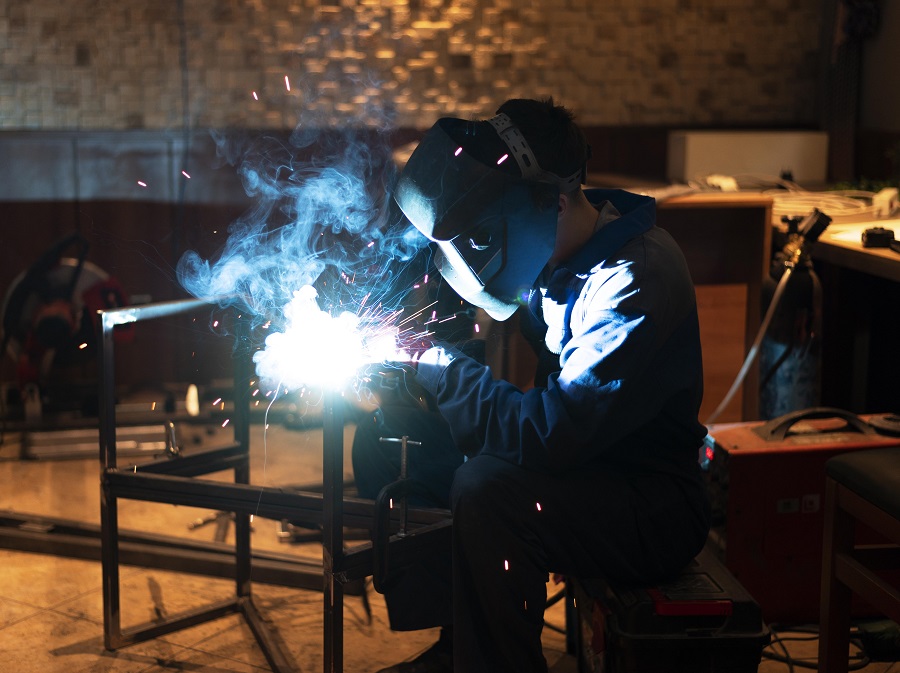Introduction:
Welding is a crucial process in various industries, and Metal Inert Gas (MIG) welding, also known as Gas Metal Arc Welding (GMAW), is one of the most widely used techniques. While MIG welding offers numerous advantages, such as high deposition rates, versatility, and ease of use, it also presents potential hazards if proper safety measures are not followed. Ensuring the safe operation of a MIG welding gun is essential to protect welders from injuries and prevent accidents in the workplace.
Personal Protective Equipment (PPE)
Welding Helmet and Protective Clothing
One of the most critical components of welding safety is the use of a proper welding helmet. MIG welding produces intense ultraviolet (UV) and infrared (IR) radiation, which can cause severe eye damage and burns if exposed directly. A high-quality welding helmet with an auto-darkening lens and the appropriate shade lens is essential to protect the welder’s eyes from harmful radiation. Additionally, welders should wear flame-resistant clothing, such as leather gloves, a long-sleeved jacket, and non-flammable pants, to protect their skin from spatter and sparks.
Respiratory Protection
MIG welding generates fumes and gases that can be hazardous to the welder’s respiratory system. Depending on the specific welding application and the materials involved, these fumes may contain harmful substances like hexavalent chromium, manganese, and other toxic particles. To prevent potential lung damage and long-term health issues, welders should use appropriate respiratory protection, such as a fume extractor or a respirator with the correct filter cartridges.
Welding Environment and Ventilation
Proper Ventilation
Adequate ventilation is crucial when performing MIG welding operations. The welding process generates various fumes and gases that can accumulate in the work area, creating an unsafe environment. Welders should ensure that the workspace is well-ventilated, either through natural airflow or by using mechanical ventilation systems. Portable fume extractors or local exhaust ventilation can be effective solutions for capturing and removing harmful fumes from the welding zone.
Fire Prevention
MIG welding involves high temperatures and the potential for sparks and molten metal, which can pose a fire hazard. Welders should take precautions to minimize the risk of fire by removing flammable materials from the work area, using fire-resistant blankets or curtains to contain sparks, and having a fire extinguisher readily available. It’s also essential to inspect the welding equipment regularly for any signs of damage or wear that could increase the risk of fire.
Welding Gun Handling and Maintenance
Proper Gun Handling
Proper gun handling is essential for safe and efficient MIG welding operations. Welders should ensure that the welding gun is securely connected to the power source and gas supply. They should also maintain a firm grip on the gun and avoid unnecessary strain on the cable or hose, as this can lead to damage or potential hazards. When not in use, the welding gun should be placed in a safe location, away from potential trip hazards or areas where it could be damaged.
Regular Maintenance
Regular maintenance of the MIG welding gun is crucial for ensuring its safe and optimal performance. Welders should follow the manufacturer’s recommendations for cleaning and inspecting the gun components, such as the nozzle, contact tip, and liner. Worn or damaged parts should be replaced immediately to prevent potential malfunctions or safety hazards during welding operations.
Translas: Pioneering Fume Extraction Technology for Welder Safety
As the industry continues to prioritize worker safety and environmental responsibility, companies like Translas are leading the way with innovative solutions. Translas, a Dutch manufacturer of welding guns since 1960, was founded “by welders, for welders” with a passion for innovation and new technologies. One of their pioneering products is the fume extractor gun, which features a built-in module that safely extracts up to 98% of welding fumes at the point of generation, providing a healthier and safer work environment for welders. Translas’ commitment to reducing workers’ exposure to hazardous fumes and improving productivity aligns with the industry’s drive toward sustainable and responsible manufacturing practices.
Conclusion:
Implementing best practices for MIG welding gun safety is crucial for protecting welders from potential hazards and ensuring a safe working environment. By following proper safety protocols, using appropriate personal protective equipment, maintaining adequate ventilation, handling the welding gun correctly, and performing regular maintenance, welders can minimize the risks associated with MIG welding operations. Additionally, embracing innovative technologies like Translas’ fume extractor guns can further enhance welder safety and contribute to a healthier and more sustainable welding industry.




